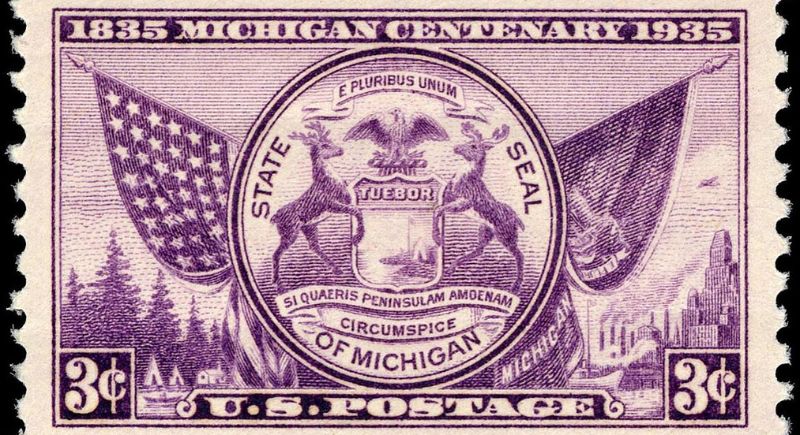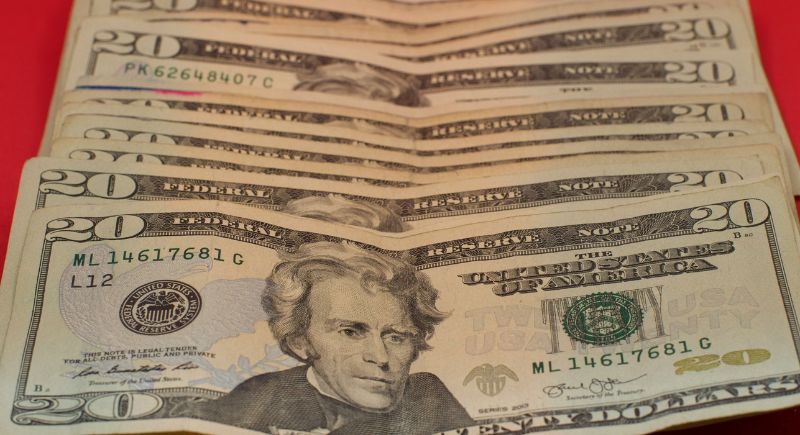Why “Buck” Means Dollar? The Unexpected Backstory
Hand someone a ten-dollar bill, and most people will say you handed them ten bucks. It sounds casual, quick, and natural. Everyone says it. Gas is four bucks a gallon. Burgers go for six bucks. Movie tickets cost twelve. The slang is baked into everyday speech, but the truth behind it starts in a far less polished place: the woods. The origin of “buck” as a stand-in for a dollar comes from something wild, traded, and skinned.
Trade Before Paper Money

Image via Wikipedia/U.S. Post Office
In colonial North America, deer were a significant part of the economy. People traded deer hides, called buckskin, for goods, services, and anything else you couldn’t grow or build. It wasn’t formal currency, but it held value in a world where coins were hard to come by and paper bills didn’t exist. In these frontier economies, especially in places like what is now Michigan, a buckskin often acted as the equivalent of a dollar. Not always, and not officially, but often enough that people started to refer to money in terms of “bucks.”
There’s a famous journal entry that helps back this up. In 1748, a Pennsylvania Dutch trader named Conrad Weiser wrote about a transaction involving five bucks’ worth of whiskey. He was referring to five deer hides. It’s one of the oldest written references connecting “buck” to trade value, and it wasn’t an isolated case. Barter systems across early settlements relied on buckskins for everyday exchanges.
How the Word Survived the Shift

Image via Unsplash/Dan Dennis
The U.S. dollar wasn’t adopted until decades later, but the habit of using “buck” stuck. Even as money became more regulated and banks took over the role of assigning value, the slang held its ground. People had already linked bucks to spending power, and old habits carried forward.
By the mid-1800s, printed proof had caught up with spoken usage. In 1856, the Democratic State Journal in California published a story involving someone being robbed of “twenty bucks.” The Oxford English Dictionary points to this as the first known printed use of “buck” as slang for a dollar. From there, it snowballed. More appearances in newspapers, magazines, and public conversations sealed it into popular language.
There’s also a side theory about the word’s rise. Some link it to the term “sawbuck,” an old nickname for a ten-dollar bill. Early U.S. bills sometimes used Roman numerals, and the “X” on the ten looked like the crossed logs in a sawbuck—a frame used for chopping wood. Some argue that “buck” was shortened from sawbuck. But this theory struggles to hold weight against the older, more direct buckskin origin, especially with written examples from the 1700s.
Buckskins Meant Business

Image via Unsplash/Anthony
It helps to picture what these deer hides meant back then. They were valuable, flexible, and practical. People turned them into clothing, shoes, bags, and tools. When trade was more physical than digital, and coins were scarce, items like buckskins acted as an economic bridge. Their worth fluctuated depending on thickness and quality, but they offered a real way to do business before banks reached every corner.
More Than Slang, It’s a Fixture
Over time, “buck” worked its way into more than money talk. American English soaked it into idioms and expressions. “Make a fast buck” describes quick profit. “Bang for your buck” means good value. “Pass the buck” shifted meaning entirely; it now refers to avoiding responsibility. But its origin comes from poker. In 19th-century games, a marker, often made of buckhorn, was used to show whose turn it was to deal. Passing the buck meant passing the role. Eventually, it evolved into ducking blame.
Even in high-stakes finance, “buck” takes on a different role. On currency trading desks, a “buck” can refer to a trade worth $1 million. So while most people use it for single-dollar amounts, professionals sometimes talk about a “half-buck” or “a full buck” meaning hundreds of thousands or more. Context matters.
A Word That Stuck Around
Not every money term survives like this one. Slang changes fast, but “buck” keeps showing up in pop culture, rap lyrics, casual speech, and office banter. It’s short, easy to say, and feels familiar. It sounds friendly in a way that “dollar” doesn’t. Nobody says, “Lend me five dollars” when they’re splitting a lunch tab. They ask for five bucks.
A few other money terms have tried to stick. “Greenbacks” came from the Civil War era, when the U.S. started using green ink on bills. “Bread” and “dough” have roots in the idea of earning your livelihood, like food on the table. Some go with “cheddar” or “clams,” both more recent slang with murkier origins.
Next time someone says they spent twenty bucks on takeout, there’s a whole story packed into that word. One that goes back to deer, frontiers, and handwritten ledgers.